
How to Use Buzzer: Examples, Pinouts, and Specs
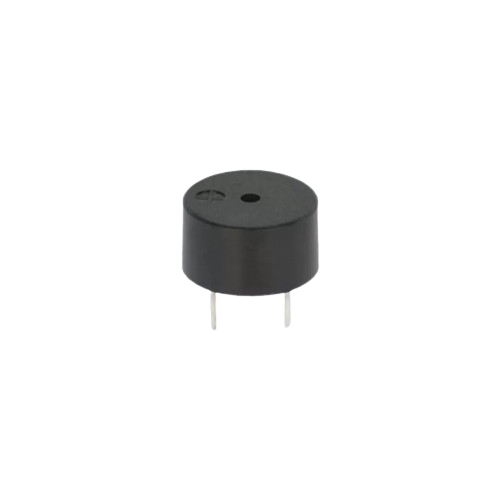
 Design with Buzzer in Cirkit Designer
Design with Buzzer in Cirkit DesignerIntroduction
A buzzer is an audio signaling device that produces sound when an electric current passes through it. It is widely used in various electronic applications to provide audible alerts or notifications. Buzzers are commonly found in alarms, timers, household appliances, and embedded systems. They are available in two main types: active buzzers, which generate sound when powered, and passive buzzers, which require an external signal to produce sound.
Explore Projects Built with Buzzer
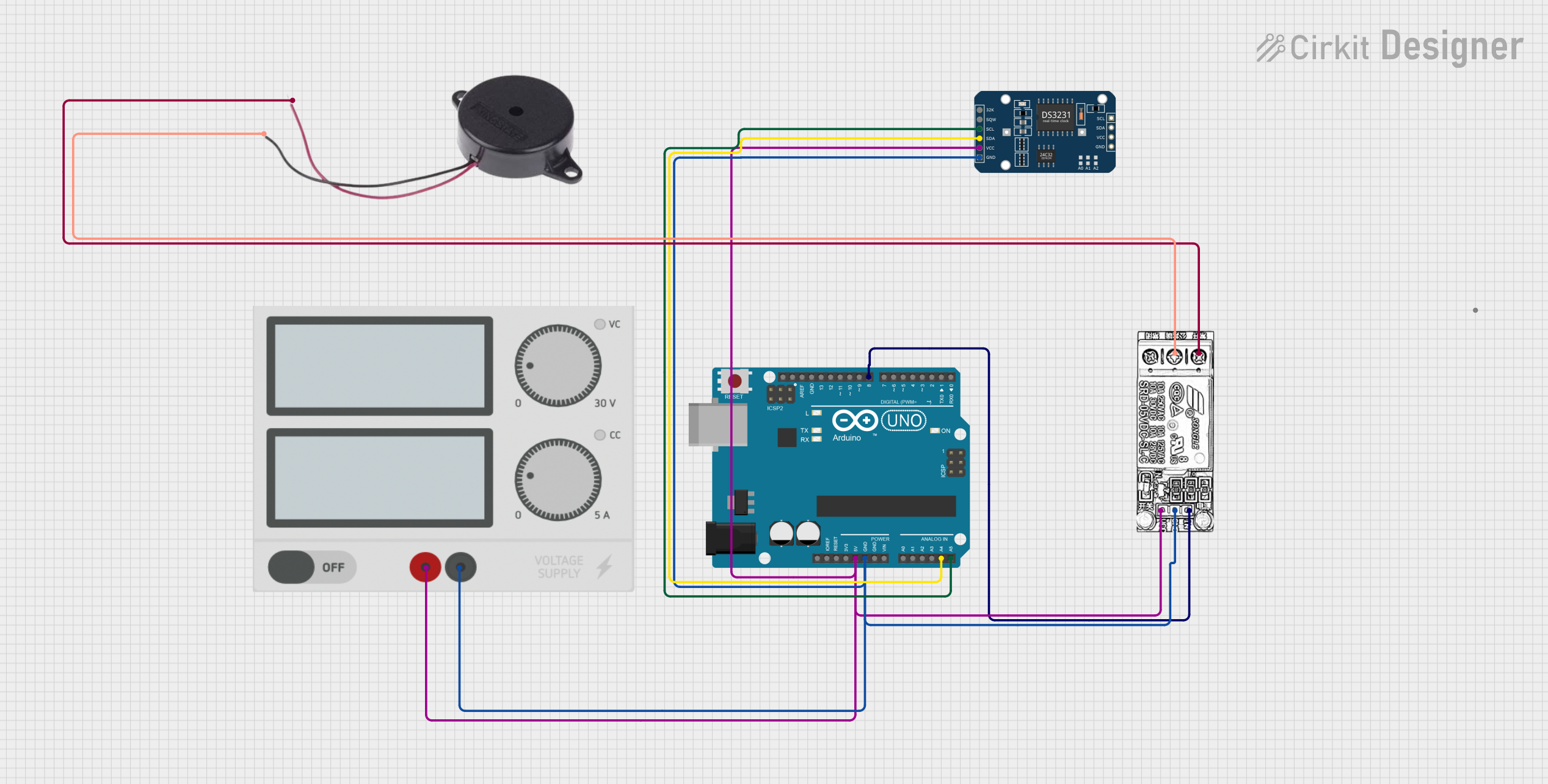
 Open Project in Cirkit Designer
Open Project in Cirkit Designer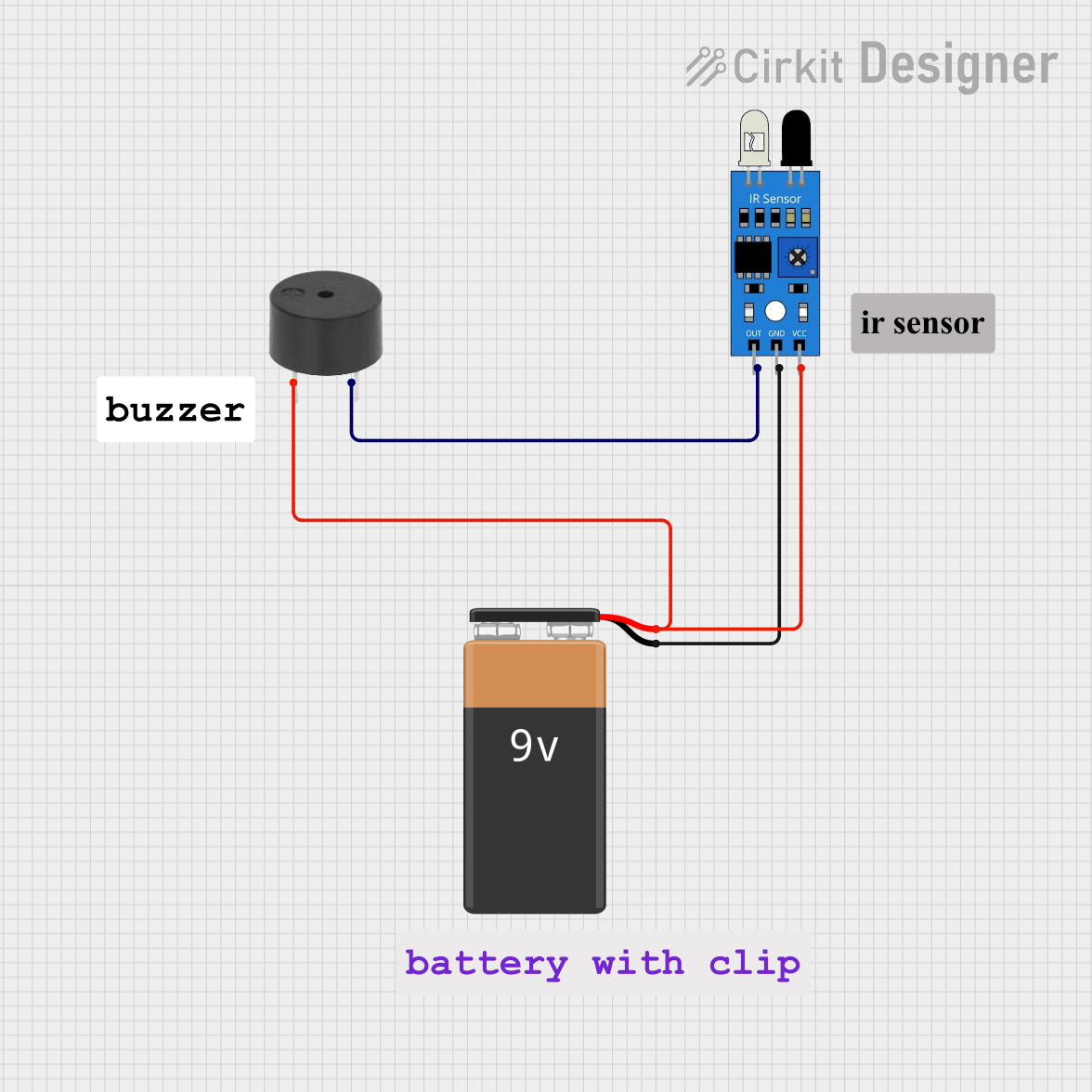
 Open Project in Cirkit Designer
Open Project in Cirkit Designer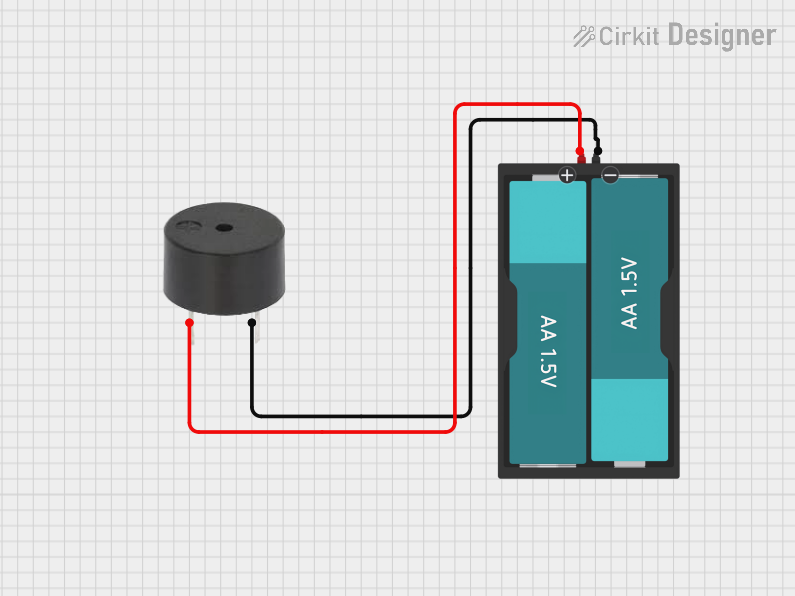
 Open Project in Cirkit Designer
Open Project in Cirkit Designer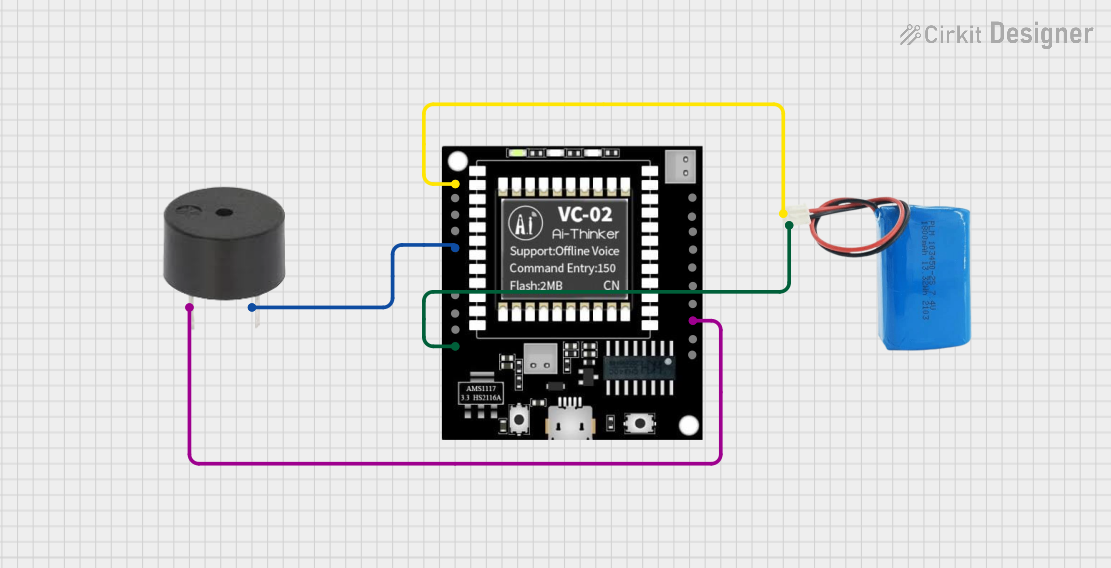
 Open Project in Cirkit Designer
Open Project in Cirkit DesignerExplore Projects Built with Buzzer

 Open Project in Cirkit Designer
Open Project in Cirkit Designer
 Open Project in Cirkit Designer
Open Project in Cirkit Designer
 Open Project in Cirkit Designer
Open Project in Cirkit Designer
 Open Project in Cirkit Designer
Open Project in Cirkit DesignerCommon Applications:
- Alarm systems (e.g., fire alarms, security alarms)
- Timers and reminders
- Notification systems in appliances (e.g., microwave ovens, washing machines)
- Embedded systems and microcontroller projects
- Toys and educational kits
Technical Specifications
Below are the general technical specifications for a typical buzzer. Note that specific values may vary depending on the model and manufacturer.
| Parameter | Specification |
|---|---|
| Operating Voltage | 3V to 12V (commonly 5V) |
| Operating Current | 10mA to 50mA |
| Sound Output Level | 85dB to 100dB (at 10cm distance) |
| Frequency Range | 2kHz to 4kHz |
| Type | Active or Passive |
| Dimensions | Varies (e.g., 12mm diameter) |
Pin Configuration
Buzzers typically have two pins:
| Pin | Description |
|---|---|
| Positive (+) | Connect to the positive terminal of the power supply or signal source. |
| Negative (-) | Connect to the ground (GND) of the circuit. |
For active buzzers, simply applying a DC voltage will produce sound. For passive buzzers, an oscillating signal (e.g., PWM) is required to generate sound.
Usage Instructions
How to Use a Buzzer in a Circuit
- Identify the Type of Buzzer: Determine whether the buzzer is active or passive. Active buzzers are easier to use as they only require a DC voltage, while passive buzzers need a signal source.
- Connect the Pins:
- Connect the positive pin of the buzzer to the power supply or signal source.
- Connect the negative pin to the ground (GND) of the circuit.
- Power the Circuit: For active buzzers, apply the appropriate voltage to produce sound. For passive buzzers, use a microcontroller or signal generator to provide an oscillating signal.
Important Considerations
- Voltage and Current: Ensure the buzzer operates within its specified voltage and current range to avoid damage.
- Polarity: Most buzzers are polarized. Reversing the polarity may damage the component.
- Mounting: Secure the buzzer properly to prevent vibrations or movement during operation.
- Signal Frequency: For passive buzzers, use a signal frequency within the buzzer's specified range (e.g., 2kHz to 4kHz) for optimal sound output.
Example: Using a Buzzer with Arduino UNO
Below is an example of how to use a passive buzzer with an Arduino UNO to generate a tone.
// Example: Generating a tone with a passive buzzer using Arduino UNO
// Define the pin connected to the buzzer
const int buzzerPin = 9;
void setup() {
// Set the buzzer pin as an output
pinMode(buzzerPin, OUTPUT);
}
void loop() {
// Generate a 1kHz tone for 500ms
tone(buzzerPin, 1000, 500);
delay(1000); // Wait for 1 second
// Generate a 2kHz tone for 500ms
tone(buzzerPin, 2000, 500);
delay(1000); // Wait for 1 second
}
Notes:
- Use the
tone()function to generate a specific frequency on the buzzer pin. - The
delay()function is used to create pauses between tones. - For active buzzers, you can simply use
digitalWrite()to turn the buzzer on or off.
Troubleshooting and FAQs
Common Issues and Solutions
No Sound from the Buzzer:
- Cause: Incorrect wiring or insufficient voltage.
- Solution: Verify the connections and ensure the power supply matches the buzzer's operating voltage.
Low or Distorted Sound:
- Cause: Insufficient current or incorrect signal frequency (for passive buzzers).
- Solution: Check the power supply and ensure the signal frequency is within the specified range.
Buzzer Overheats:
- Cause: Exceeding the voltage or current rating.
- Solution: Use a resistor to limit current or reduce the supply voltage.
Buzzer Does Not Respond to PWM Signal:
- Cause: Using an active buzzer instead of a passive one.
- Solution: Confirm the type of buzzer and use the appropriate method to drive it.
FAQs
Q: Can I use a passive buzzer without a microcontroller?
A: Yes, but you will need an external oscillator circuit to generate the required signal.
Q: How do I differentiate between an active and a passive buzzer?
A: Active buzzers typically produce sound when connected to a DC voltage, while passive buzzers require an oscillating signal.
Q: Can I connect a buzzer directly to a GPIO pin?
A: Yes, but ensure the GPIO pin can supply enough current. If not, use a transistor or driver circuit.
Q: What is the typical lifespan of a buzzer?
A: Buzzers generally have a long lifespan, often exceeding 10,000 hours of operation under normal conditions.